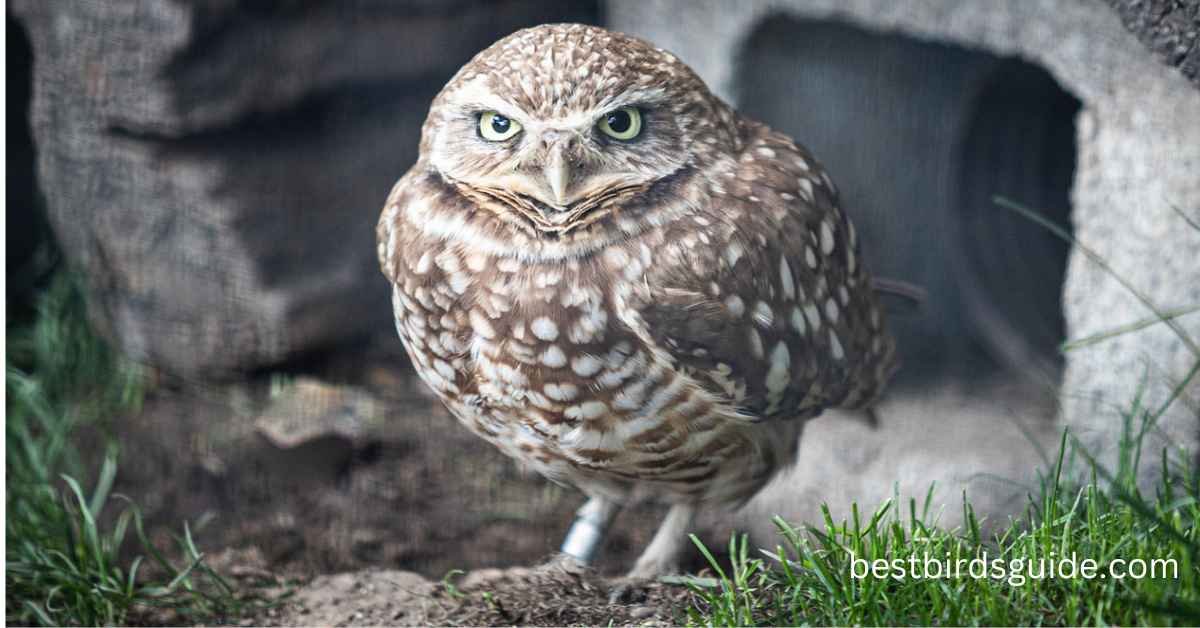Owls in Louisiana are a fantastic sight to behold. These majestic predators can be found throughout the state, with various species present. Not only are they stunningly beautiful and captivating to watch, but they also play an essential role in the local environment.
Louisiana has eight owl species, including Great Horned Owls, Barred Owls, Burrowing Owls, and Elf Owls. These birds generally prefer wooded areas or wetlands where they hunt small prey such as rodents and reptiles. In addition to providing food for other wildlife, owls help keep rodent populations under control and aid in pest management. They also can fly silently by adjusting their feathers, allowing them to sneak up on their prey undetected.
Different types of Owls in Louisiana
Owls are a species of bird that belongs to the order Strigiform, and Louisiana is no exception in its unique selection of these birds. Depending on the species, owls can be found across Louisiana in many different habitats and environments.
Barn Owl

Barn Owls are a magnificent species throughout the United States but especially plentiful in Louisiana. These majestic birds of prey can be seen soaring through the skies at dawn and dusk, looking for their next meal. Barn Owls have an affinity for grasslands, marshes, open fields, and other wide-open spaces because it allows them to spot potential prey from far distances.
The Louisiana Department of Wildlife and Fisheries recommends that landowners take proactive steps to attract Barn Owls to their property by installing nesting boxes that provide warmth and shelter for these majestic creatures. Specialized birdhouses made specifically for Barn Owls should include a shelf on the bottom of the box so owlets can easily approach food brought in by parents.
Specification:
• Scientific Name: Tyto Alba
• Length: 12.6-15.8 inches
• Weight: 14.1-24.7 ounces
• Wingspan: 39.4-49.2 inches
Barred Owl

The Barred Owl is a species of Owl that is found in Louisiana. It has an unmistakable call of eight hoots: “Who cooks for you?” “Who cooks for you all?” It is a large bird, measuring up to 18 inches long and weighing around 1 pound. Its wings’ distinctive barred feather pattern helps it blend into its environment.
In Louisiana, the Barred Owl can be found throughout the state, inhabiting deciduous forests and swamps near bodies of water. They are primarily nocturnal hunters feeding small mammals such as mice and voles. During nesting season, they will also hunt amphibians and invertebrates like crayfish and insects. They form monogamous pairs during the breeding season and build their nests high up in trees or stumps among dense foliage, where they have excellent views over large areas.
Specification:
• Scientific Name: Strixvaria
• Length: 16-25 inches
• Weight: 26 ounces
• Wingspan: 38-49 inches
Burrowing Owl

The Burrowing Owl is a unique Owl species native to Louisiana. This small, ground-dwelling bird stands out from other varieties due to its distinctive features, such as brown and white spotted feathers, rounded wings, and facial disks. In recent years, the population of Burrowing Owls in Louisiana has become threatened due to human development and habitat loss.
The conservation efforts for this species are focused on preserving their natural habitats, which consist mainly of dry meadows and fields with short vegetation. These areas provide optimal living conditions for the owls since they can easily hide to avoid predators or find prey. To promote sustainable practices by local landowners, organizations like the Audubon Society have developed educational programs about how people can help protect these birds.
Specification:
• Scientific Name: Athenecunicularia
• Length: 7.5-9.8 inches
• Weight: 5.3 ounces
• Wingspan: 21.6 inches
Eastern Screech-Owl

The Eastern Screech-Owl is a small species of Owl found throughout Louisiana. This nocturnal bird has yellow eyes and bright, distinctive plumage that ranges from grey to rusty red. They mainly feed on insects, small rodents, frogs, and other small creatures they can find in the wild.
These owls live in wooded areas near streams or wetlands. They prefer to nest inside holes in old trees rather than building their nests like some other species of Owl do. During the day, they roost quietly in these hiding spots until nightfall, when they come out to hunt for food.
The Eastern Screech-Owl is an essential part of Louisiana’s ecosystem because it helps keep insect and rodent populations down, which benefits both people and other wildlife in the area.
Specification:
• Scientific Name: Megascopsasio
• Length: 6-10 inches
• Weight: 5.6 ounces
• Wingspan: 19-24 inches
Great Horned Owl

The great horned Owl is a majestic bird that makes its home in Louisiana. This species of Owl can be found inhabiting many different areas throughout the state, from river bottoms to coastal marshes. It is most recognizable for its piercing yellow eyes and a distinctive “hoot” call that often echoes through the night sky.
It has an impressive wingspan measuring between three and four feet. The feathers are primarily brownish-grey with white patches on their chest and stomach. They also have large tufts of feathers atop their heads, giving them an imposing look that helps them intimidate potential predators in their territory.
These owls hunt at night and prey on small mammals such as rabbits, rats, mice, and squirrels.
Specification:
• Scientific Name: Bubo virginianus
• Length: 18.1-26 inches
• Weight: 50 ounces
• Wingspan: 55.2 inches
Long-Eared Owl

The long-eared Owl is a rare species in the United States, and Louisiana has been fortunate enough to have them inhabit the state for years. These majestic birds are often seen perched on branches at night or in the early morning, hunting for their prey.
Though they may look similar to other owls, their elongated ear tufts can be easily distinguished, which gives them an intimidating appearance. During mating season, male owls use these ears to make impressive displays when trying to attract a mate. They are also known for having deep hooting calls that echo in the night’s darkness as if they were calling out from beyond.
These beautiful birds typically nest in wooded areas with plenty of cover and protection from predators such as hawks, foxes, and raccoons.
Specification:
• Scientific Name: Asiootus
• Length: 13.7-15.7 inches
• Weight: 8.8 ounces
• Wingspan: 35.5-40 inches
Northern Saw-Whet Owl

The Northern Saw-Whet Owl, one of the smallest species of Owl found in North America, is an increasingly rare sight in Louisiana. These diminutive birds have wingspans of only around 18 inches and weigh less than half a pound. Despite their tiny size, they are powerful predators and can hunt anything from small rodents to giant insects.
The Northern Saw-Whet Owl has been seen in parts of eastern Louisiana over the last few years, but it remains fragile. The species prefers dense forests for its habitat, so when these areas are cleared for development or reclamation projects, the owls struggle to find suitable places to live. Human disturbance and predation from larger animals, such as hawks, also put them at risk.
Specification:
• Scientific Name: Aegoliusacadicus
• Length: 6.5-9 inches
• Weight: 1.9-5.3 ounces
• Wingspan: 16.5-22.2 inches
Short-Eared Owls in Louisiana

The short-eared Owl is a bird found throughout the United States but has become increasingly rare in Louisiana. This nocturnal hunter can be spotted during the day, perched atop tree branches or taking off in search of prey. It is known for its distinctive calls and broad wingspan reaching four feet wide.
The short-eared owl population in Louisiana has been declining since the mid-2000s due to habitat loss and changes in weather patterns. The birds prefer open grasslands, prairies, wetlands, marshes, and meadows, which have been destroyed by development over time.
Severe droughts or extreme floods have caused further damage to their natural habitats, making it difficult for them to survive. Despite this, however, some small pockets of populations are scattered across the state where they can be seen with enough patience and luck.
Specification:
• Scientific Name: Asioflammeus
• Length: 13-17 inches
• Weight: 7.3-16.8 ounces
• Wingspan: 33.5-40.5 inches
Final Thoughts
The Owls in Louisiana are an important species that are facing a lot of threats. The destruction of its natural habitat from development, climate change, and other human-caused activities puts this species at risk. Conservation efforts must be taken to protect the Owl, such as preserving its natural habitats and monitoring population changes. More research must determine the best way to conserve this species.
READ MORE Hummingbird Feeder with Metal Base

